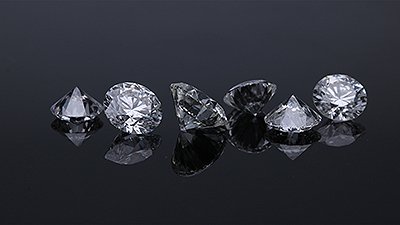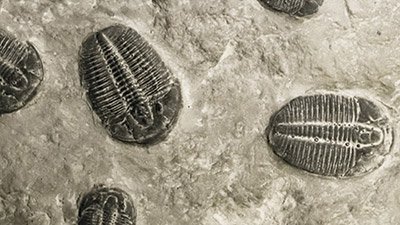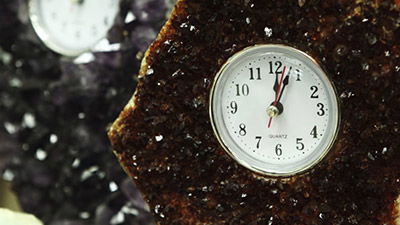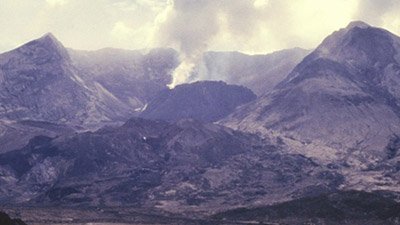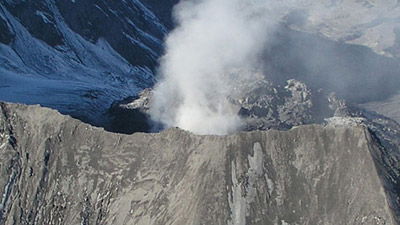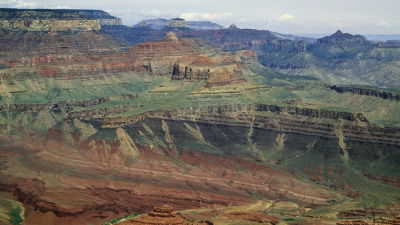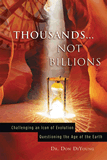Radiometric Dating
Radiometric dating measures the decay of radioactive atoms to determine the age of a rock sample. It is founded on unprovable assumptions such as 1) there has been no contamination and 2) the decay rate has remained constant. By dating rocks of known ages which give highly inflated ages, geologists have shown this method can’t give reliable absolute ages.
Radiometric Clock
Many geologists claim that radiometric “clocks” show rocks to be millions of years old. However, to read any clock accurately we must know where the clock was set at the beginning.
Radiometric Dating and the Age of the Earth
Most people think that radioactive dating has proven the earth is billions of years old. After all, textbooks, media, and museums glibly present ages of millions of years as fact. Yet few people know how radiometric dating works or bother to ask what assumptions drive the conclusions.
Radiometric Dating Accurate?
Is the earth approximately four billion years old? This figure wasn’t established by radiometric dating of the earth itself. Most people are not aware of this.
Radiohalos
Radiohalos shouldn’t exist, according to conventional wisdom! Though they are very tiny, polonium radiohalos have a huge message that cannot be ignored. They point to a catastrophic origin for granites, consistent with the biblical timeframe for earth history and God’s judgment during the Flood.
News About Radiometric Dating
-
Aug. 23, 2021 from Ken Ham Blog
Evolutionary geologists claim diamonds are billions of years old, but they ignore major issues with radiometric dating and Carbon-14 in diamonds.
Articles About Radiometric Dating
-
Nov. 12, 2023 from Answers Magazine
How much do we really know about all those human and ape fossils displayed in museums and textbooks? The dating methods aren’t as rock-solid as most people assume.
-
Jan. 23, 2020 from Answers in Depth
Uranium-lead radioisotope dating is now the preferred absolute dating method among geochronologists. But there are several problems with this particular method.
-
Sept. 16, 2017 from Essays on Origins: Creation vs. Evolution
Selected data and unprovable assumptions are a problem with all methods for determining the age of the earth, as well as for dating its fossils and rocks.
-
April 24, 2017 from How Do We Know the Bible Is True? Volume 2
Let’s take a closer look at the radioactive dating method and the radiometric dating methods and see how reliable they really are.
-
March 27, 2017 from Answers in Depth
NCSU’s recent research revealed an “oversight in a radioisotope dating technique used to date everything from meteorites to geologic samples.”
-
Oct. 27, 2016 from Answers in Depth
New chemical analyses appear to show that some of the early mantle rock may have survived until today in rock formations called flood basalts.
-
Technical In-Depth ArticleHelium Diffusion Rates Support Accelerated Nuclear DecayMay 4, 2016 from Answers in Depth
A significant fraction of the earth’s radioactive elements, particularly uranium and thorium, appear to be in the granitic rock of the upper continental crust.
PDF Download -
Semi-Technical Feedback ArticleAre the RATE Radiocarbon (14C) Results Caused by Contamination?May 6, 2015 from Feedback
Internet posts continue to accuse the RATE team of ignoring clear evidence of contamination. But is this really the case?
-
In-Depth ArticleThe Latest on “Little Foot’s” Bid for Status as Humanity’s Most Ancient AncestorApril 16, 2015 from Answers in Depth
The date evolutionists report for Little Foot is old enough to keep it in the running for human ancestor, but there is no reason to consider the dates reliable.
-
Technical In-Depth ArticleRocks Around the Clock: Do Zircons Contain Reliable Time Stamps and Early Earth’s Secrets?Feb. 26, 2014 from Answers in Depth
Despite debate about the accuracy of the uranium “clocks” they contain, scientists say they’ve found a zircon with a confirmed age of 4.4 billion years.
-
Feb. 19, 2014 from Answers Magazine
Radiometric dating is often used to “prove” rocks are millions of years old.
-
Feedback ArticleFeedback: Dating Rocks Helps Creation ScientistsNov. 22, 2013 from Feedback
Dr. Andrew Snelling explains how radioactive dating methods may help us derive not absolute but relative ages of rocks.
-
July 1, 2012 from Answers Magazine
Geologists have discovered a great mystery—tiny black circles, called radiohalos, formed by polonium decay. Where'd it come from, and where'd it go?
-
-
Feedback ArticleRadiometric Dating and ProofDec. 30, 2011 from Feedback
Isn’t radiometric dating irrefutable proof that the earth is approximately four billion year old? Dr. Andrew Snelling, AiG—U.S., responds.
-
Feedback ArticleDating TechniquesMay 6, 2011 from Feedback
Just how far off are the commonly accepted dating methods? Dr. Andrew Snelling explains.
-
March 16, 2011 from Answers Magazine
Interpreted in a biblical framework, radiometric dating methods help us better understand the earth's history since creation six thousand years ago.
-
Technical In-Depth ArticleRadioisotopes and the Age of the EarthMarch 9, 2011 from Answers in Depth
This article summarizes the purpose, history, and intermediate findings of the RATE project five years into an eight-year effort.
PDF Download -
Solar Flares and Radioactive Decay RelationshipAug. 28, 2010
Last year we mentioned research that showed a relationship between earth’s distance from the sun and the rate at which certain elements undergo radioactive decay—an eyebrow-raising linkage.
-
Feedback ArticleFallacious RefutationsAug. 27, 2010 from Feedback
Dr. Andrew Snelling, AiG–U.S., explains how to deal with refutations of creationist material
-
Aug. 4, 2010 from Answers Magazine
Once you understand the basic science of radiometric dating, you can see how wrong assumptions lead to incorrect dates.
-
Magazine ArticleRadiometric DatingApril 1, 2010 from Answers Magazine
Does radiometric dating show that rocks are millions of years old? No!
-
Technical In-Depth ArticleWhole-Rock K-Ar Model and Isochron, and Rb-Sr, Sm-Nd, and Pb-Pb Isochron, “Dating” of the Somerset Dam Layered Mafic Intrusion, AustraliaMarch 24, 2010 from Answers in Depth
The Somerset Dam layered mafic intrusion in southeast Queensland, Australia, has been conventionally dated as Late Triassic by the apparently successful application of radioisotopic dating techniques.
PDF Download -
Technical In-Depth ArticleThe Relevance of Rb-Sr, Sm-Nd, and Pb-Pb Isotope Systematics to Elucidation of the Genesis and History of Recent Andesite Flows at Mt. Ngauruhoe, New Zealand, and Implications for Radioisotopic DatingJan. 6, 2010 from Answers in Depth
Mt. Ngauruhoe in the Taupo Volcanic Zone of New Zealand erupted andesite lava flows in 1949 and 1954, and avalanche deposits in 1975.
PDF Download -
Technical In-Depth ArticleThe Cause of Anomalous Potassium-Argon “Ages” for Recent Andesite Flows at Mt. Ngauruhoe, New Zealand, and the Implications for Potassium-Argon “Dating”Dec. 30, 2009 from Answers in Depth
Mt. Ngauruhoe is an andesite stratovolcano, rising above the Tongariro volcanic massif within the Tongariro Volcanic Center of the Taupo Volcanic Zone.
PDF Download -
Technical In-Depth ArticleU-Th-Pb “Dating”: An Example of False “Isochrons”Dec. 9, 2009 from Answers in Depth
As with other isochron methods, the U-Pb isochron method has been questioned in the open literature.
PDF Download -
Technical In-Depth ArticleRadiohalos and DiamondsSept. 9, 2009 from Answers in Depth
We offer an explanation for the radiohalos and for the “tubes” in these diamonds in terms of a hydrothermal fluid transport model for Po radiohalo formation.
PDF Download -
Semi-Technical In-Depth ArticleRadiohalos in the Cooma Metamorphic Complex, New South Wales, AustraliaSept. 2, 2009 from Answers in Depth
The Cooma granodiorite was generated as a consequence of the regional metamorphism that resulted from the catastrophic large-scale emplacement during the catastrophic plate tectonics of the Flood.
PDF Download -
Technical In-Depth ArticleRadiohalos in the Shap Granite, Lake District, EnglandAug. 26, 2009 from Answers in Depth
The Po radiohalos and other evidence associated with this granite thus remove objections to Flood geology and any need to place the Flood/post-Flood boundary in the lower Carboniferous.
PDF Download -
Technical In-Depth ArticleRadiohalos—A Tale of Three Granitic PlutonsAug. 19, 2009 from Answers in Depth
The origin and significance of radiohalos have been debated for almost a century, perhaps largely because their geological distribution has been poorly understood.
PDF Download -
Oct. 1, 2008 from Answers Magazine
The chemical data used in the radiometric dating method requires interpretation, which is sure to be wrong if Biblical data is ignored.
-
Feedback ArticleQuestioning the Reliability of the RATE Group and Its FindingsNov. 16, 2007 from Feedback
A feedback submitter suggests that the RATE team was dishonest because “[t]hey already know the truth [and] the facts that they find will reflect their presuppositions.”
-
Semi-Technical In-Depth ArticleRadioisotopes and the Age of the EarthOct. 31, 2007 from Answers in Depth
The RATE research project demonstrated that creationists could support a larger-scale collaborative research effort.
PDF Download -
Book ChapterDoes Radiometric Dating Prove the Earth Is Old?Oct. 4, 2007 from The New Answers Book 1
Many accept radiometric methods as proof that the earth is millions of years old, in contrast to the biblical timeline. Mike Riddle exposes the unbiblical assumptions used in these calculations.
-
Radiometric Dating—Not InfallibleJune 1, 2007 from Responding to Protestors’ Propaganda
There are plenty of indications that these radiometric dating methods are not as infallible as they would have you believe!
-
June 28, 2006 from Answers Magazine
Deep in the eastern Grand Canyon, Arizona, is a stacked sequence of “ancient” basalt lava flows known by geologists as the Cardenas Basalt.
-
Feedback ArticleRadioisotope Dating of Rocks in the Grand CanyonApril 14, 2006 from Feedback
Was Dr. Andrew Snelling “irresponsible” for pointing out dating discrepancies at the Grand Canyon?
-
RATE Strikes at the Heart of EvolutionSept. 13, 2005
The RATE team has confirmed the trustworthiness of Scripture, thus upholding its authority, and has shown that the battle is not between science and the Bible.
-
Magazine ArticleRadioisotope Dating of Rocks in the Grand CanyonJune 1, 2005, pp. 44–49
The radioisotope methods, long touted as irrefutably dating the earth as countless millions of years old, have repeatedly failed to give reliable and meaningful absolute ages for Grand Canyon rocks.
-
Technical Research PaperNational Geographic Plays the Dating GameApril 1, 2002, pp. 48–50
A recent National Geographic article fails to portray the commonly used age-determination methods either accurately or objectively.
-
Semi-Technical Research PaperBillion-Fold Acceleration of Radioactivity Demonstrated in LaboratoryAug. 1, 2001, pp. 4–6
Billion-Fold Acceleration of Radioactivity Shown in Laboratory
-
Semi-Technical Research PaperRating RadiodatingAug. 1, 2001, pp. 31–32
A group of young-Earth researchers called RATE (Radioisotopes and the Age of The Earth) are investigating radioactive dating methods and developing alternative young-Earth explanations.
-
Magazine ArticleCountering the CriticsJune 1, 2001, pp. 24–25
Understandably, Dr Austin’s devastating research into radioisotopic dating has been criticized by those who believe in millions of years.
-
Magazine ArticleRadio-Dating in RubbleJune 1, 2001, pp. 23–25
Radioisotope dating conveys an aura of reliability both to the general public and professional scientists. But is the method all it’s cracked up to be?
-
Magazine ArticleMore and More Wrong DatesJune 1, 2001, pp. 24–25
Is this dating failure from Mount St Helens an isolated case of radioisotope dating giving wrong results for rocks of known age? Certainly not!
-
Technical Research PaperNew Record of Polonium Radiohalos, Stone Mountain Granite, Georgia (USA)April 1, 2001, pp. 86–88
The Stone Mountain granite samples in this study yielded no zircon crystals and no diffuse radiation stains. These data are insufficient to determine the timing and mode of formation of these radiohal
-
Technical Research PaperContra Rb-Sr DatingApril 1, 2001, pp. 112–125
It is important that alternative models are developed to explain the observed patterns of strontium isotopes.
-
Technical Research PaperConflicting ‘Ages’ of Tertiary Basalt and Contained Fossilised Wood, Crinum, Central Queensland, AustraliaAug. 1, 2000
The fossilised wood’s radiocarbon demonstrates the basalt’s youthfulness and the failure of radioisotopic ‘dating’, but is consistent with a Flood/immediate post-Flood stronger magnetic field.
-
Magazine ArticleRadioactive “Dating” in Conflict!Dec. 1, 1997, pp. 24–27
When miners were sinking a ventilation shaft for the new Crinum Coal Mine in Central Queensland in 1993 (see map below) they unearthed a rare find.
-
Semi-Technical Magazine ArticleThe Pigs Took It AllJune 1, 1995, pp. 36–38
A popular myth is that radioactive dating methods confirm the geologic time-scale and the concept of human evolution.
Recommended Resources

Answers in Genesis is an apologetics ministry, dedicated to helping Christians defend their faith and proclaim the good news of Jesus Christ.
- Customer Service 800.778.3390
- Available Monday–Friday | 9 AM–5 PM ET
- © 2025 Answers in Genesis


